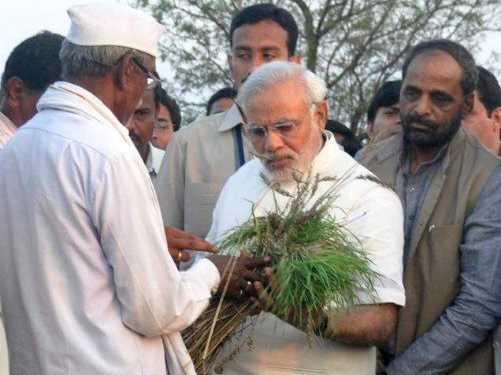Modi government has taken another step towards reaching the goal of doubling farmer’s income by 2022. National Bank for Agriculture and Rural Development (NABARD), the apex institution for agricultural and rural development has decided to 65,635 crore for 93 irrigation projects under Pradhan Mantri Krishi Sinchayi Yojana (PMKSY). “All financial support will be available for the projects. There is progress. The timely completion depends on state government’s disbursement of their share of funds and union water resources ministry’s active role,” said NABARD chairman H K Bhanwala.
Government seeks to revolutionize agricultural irrigation in the country. Indian agriculture is primarily dependent on agricultural rain for irrigation. Lack of good infrastructure for non agricultural irrigation has created many problems for agricultural growth and farmers of the country. Successive droughts in 2014 and 2015 led to thousands of farmer suicides in the country. If irrigation infrastructure has been strong then farmers would not have to face such disastrous consequences of droughts. Therefore, investment in irrigation is very important for healthy growth of agriculture sector.
18 projects are already completed and 9 are near completion under PMKSY. Till now, the government has already released Rs 23,402.72 crore for 86 projects under the scheme. Maximum number of projects has been allotted in Uttar Pradesh. Many states created good irrigation infrastructure through state level funding but UP does not have one. UP has already allocated Rs 7,000 crore through budgetary process this year. Bhanwala praised UP government “The irrigation projects are implemented through state governments. The centre’s share is available for many projects, but it takes time to get the state’s share.”
Modi government has taken many big decisions to reach the target of doubling farmer’s income by 2022. To make farmers financially secure in the case of poor crop growth, the government launched Pradhan Mantri Fasal Bima Yojna (PMFBY). To provide irrigation facilities to farmers across the country, PM Modi launched Pradhan Mantri Krishi Sinchai Yojana (PMKSY) and pumped money into the National Bank for Agriculture and Rural Development (NABARD) to increase credit penetration to farmers. The MSP for common variety paddy, the most important Kharif crop will be raised by Rs 200 over last year’s Rs 1,550 per quintal, which is 13 percent increase from the MSP in the previous financial year.
Impact of these policies was visible in healthy agricultural growth in last fiscal year. In the FY 2018, the country exported agricultural commodities worth $ 38.74 billion, as against imports of $ 24.89 billion which resulted in farm trade surplus of $ 13.85 billion. The surplus for 2016-17 and 2015-16 was $ 8.05 billion and $ 10.23 billion respectively. In the last quarter of the fiscal year 2017-18, growth in agriculture sector was 4.5 percent. Agriculture is driver of rural economy and healthy growth in this sector will certainly help Modi government in getting reelected in 2019. Agriculture employs almost half of the population of the country, and hence it is very important that this sector performs well if India wants to achieve a double digit growth.































